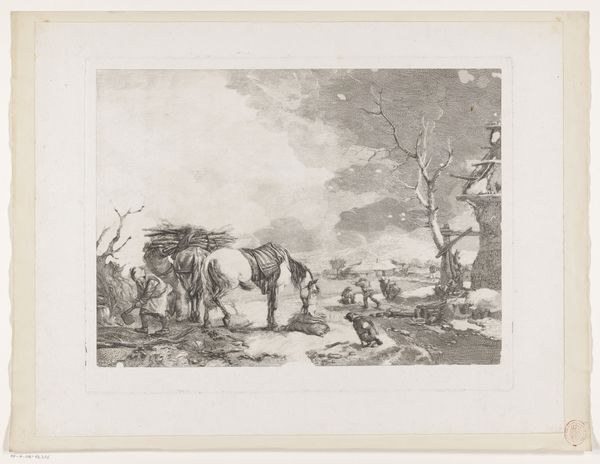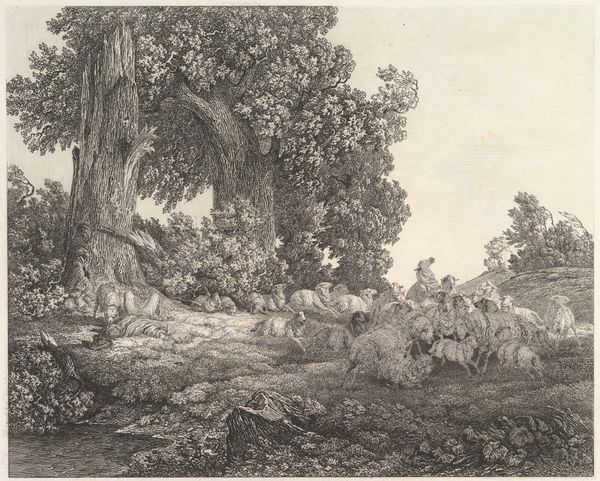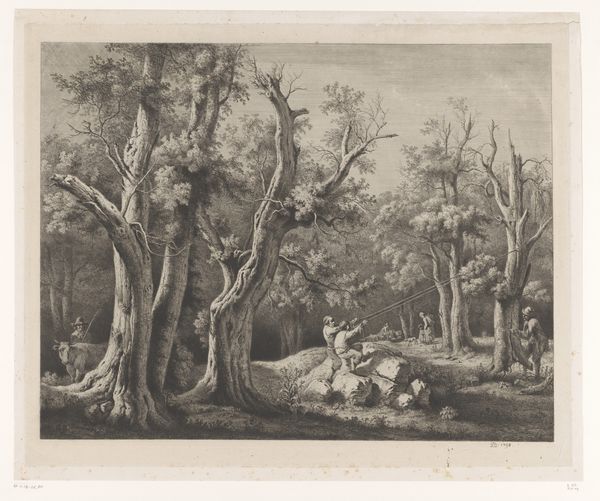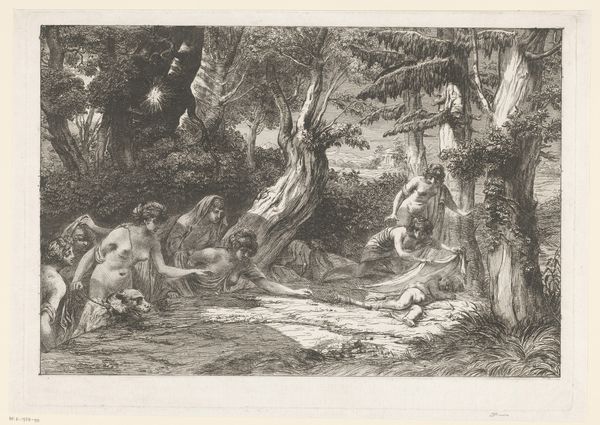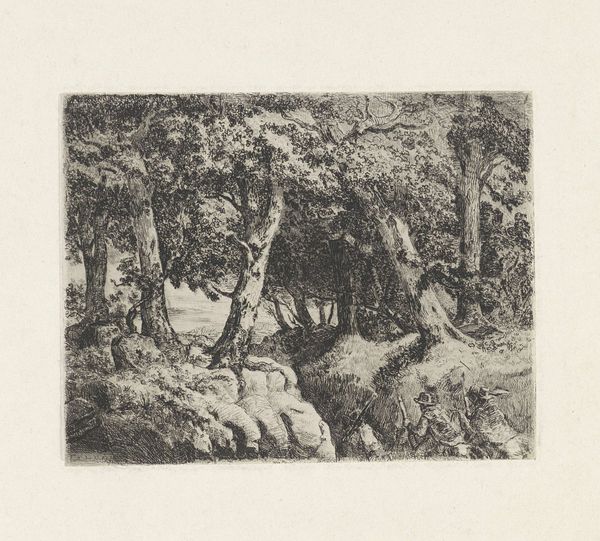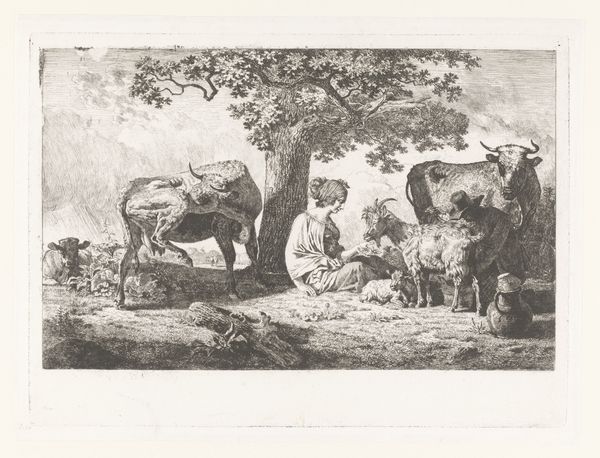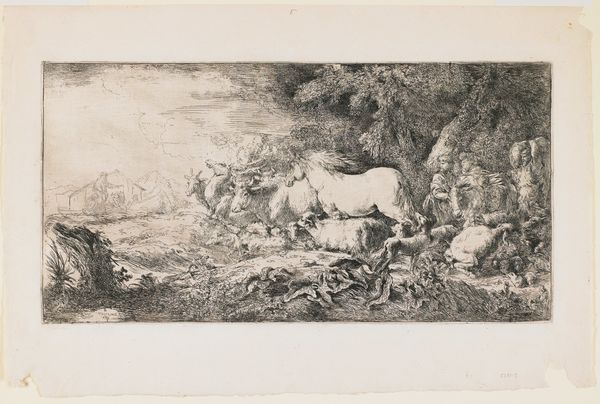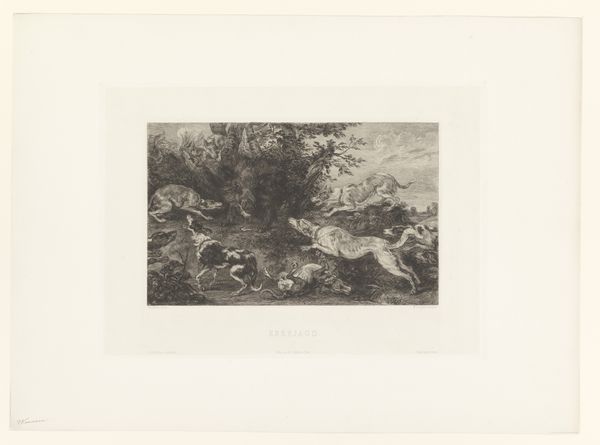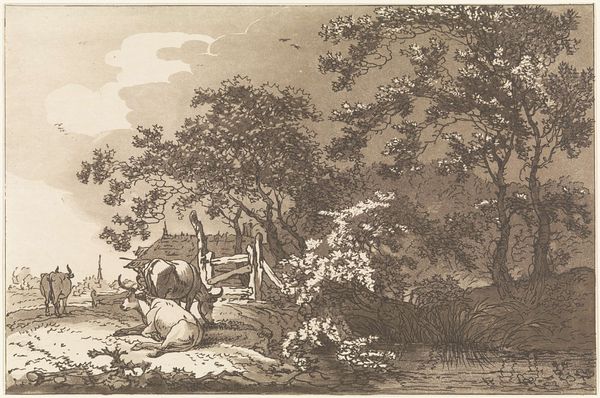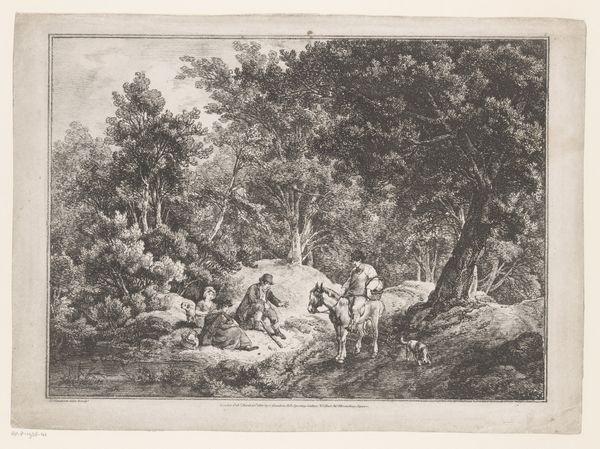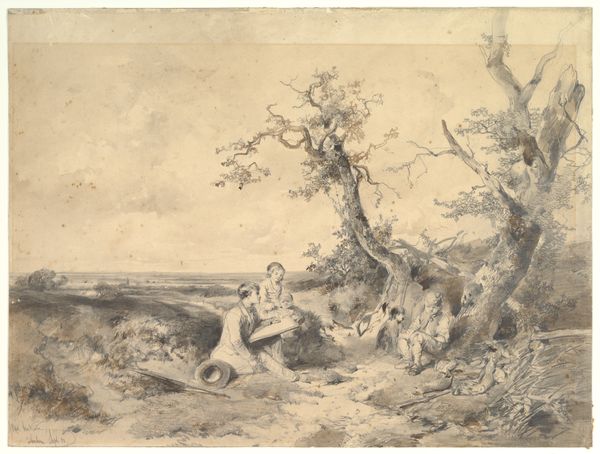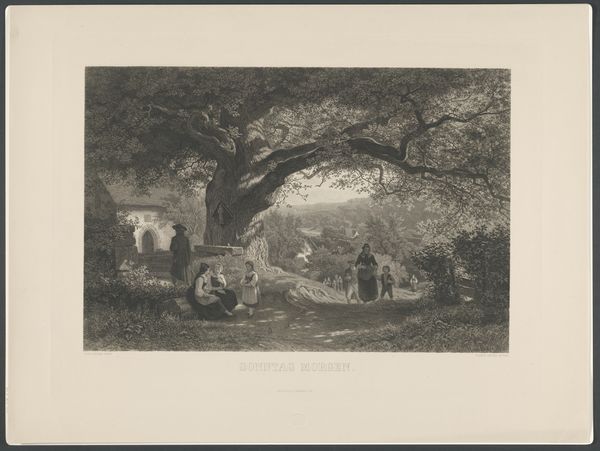
Dimensions: Image: 3 15/16 × 7 1/2 in. (10 × 19 cm) Sheet: 5 1/2 × 8 11/16 in. (14 × 22 cm)
Copyright: Public Domain
Curator: Here we have Richard Ansdell's "The Park," created in 1865, a drawing also rendered as an etching and engraving currently residing at the Metropolitan Museum of Art. Editor: There’s an immediate tranquility in the composition. The shaded foreground against the bright sky creates a relaxing effect. A sense of pastoral harmony emanates from the figures clustered beneath the protective canopy. Curator: Pastoral is precisely the cultural thread Ansdell is tapping into. Note how the sheep gather closely around the shepherd. They mirror our deeply ingrained image of protection and guidance in familiar stories and sacred parables, stretching all the way back to antiquity. It presents a particular rendering of the shepherd as not someone active and directing, but in quiet repose, yet always watchful, perhaps. Editor: True. The composition leads the eye deliberately—dark to light, a diagonal line. It’s punctuated by the variations in the etching itself: closer hatching and denser strokes that build depth in the shadow beneath the large tree. Curator: The tree itself functions as a classic symbol: protection, growth, knowledge, a meeting place—it grounds the symbolic language in a nature setting where the land represents not only place, but a grounding. This is heightened by the shepherd’s presence—as the sheep look to him and his dog, so the eye looks back to him and to the horizon. Editor: Do you think the etching itself, the use of line, contributes to this feel of romanticism, as the artwork has been tagged? It is a calculated, constructed image, after all, but still has that rustic or handmade effect. Curator: Yes, most definitely. The artist takes the symbols from nature and adds a textural depth using etching to add depth, reinforcing that emotional pull with technique. We receive not only the information presented in the piece, but the impression of depth and history, as well. Editor: I find myself now more aware of how formal qualities serve more significant cultural encoding. I began from a purely aesthetic viewpoint, but now consider what the very density and lines of the print convey. Curator: And that's the beautiful, multilayered aspect of art—how it invites us into new pathways to consider our world.
Comments
No comments
Be the first to comment and join the conversation on the ultimate creative platform.

